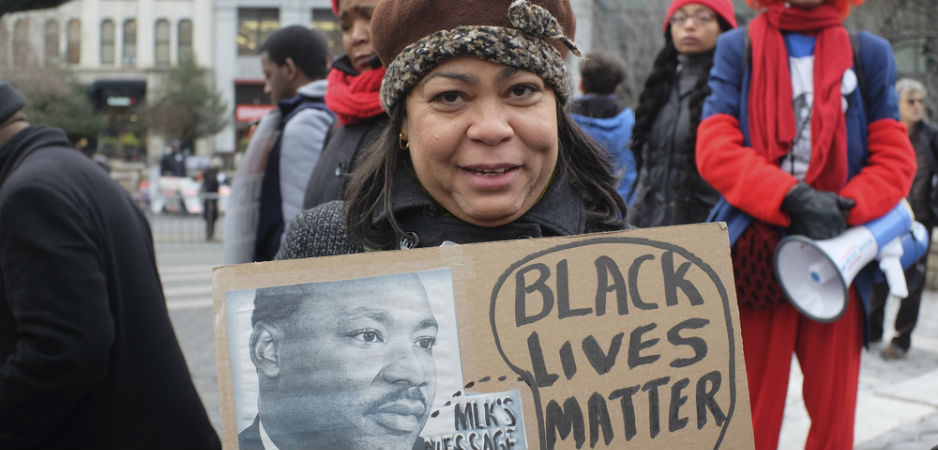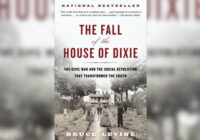For black lives to truly matter in America, white people will have to begin to see black people as just people and black kids as just kids.
For most of my life, I have believed that each of us should strive to be the best that we can be—not as individual islands seeking only personal gain, but as something bigger, something common, something good. However, for all to achieve, there has to be a good measure of equality of opportunity.
It started early for me. Mom and Dad taught me that all folks were equal in the eyes of the law and that nobody should care what god thought about this. They taught me that character, competence and values were important and that skin color was not.
Although I didn’t grow up in a neighborhood with black folks, the best little league baseball team in the area was a team of black kids. I really respected those kids when it turned out that I couldn’t hit what that black kid was throwing. In the 1950s in suburban Maryland, it seemed normal to live separate but try to play equal. “Real” racism happened to other people elsewhere.
Then I saw it and began to understand. When I got off the bus, I saw it up close for the first time in my life. There it was—restrooms labeled “White” and “Colored.” The year was 1963; the place was Durham, North Carolina. This white boy was starting college at Duke University. That sign, “Colored,” slapped me in the face. Drinking fountains worked the same way.
I learned a lot at Duke and graduated in 1967. I never forgot that sign or what it seemed to mean to be black in North Carolina in the 1960s. But I surely thought that it would end for black folks, that the 1960s civil rights movement was a dawning. That racism would soon be part of the past and racial harmony part of the future.
I have been wrong about a lot of things in my life, but really wrong about this. Over 50 years forward, the year is 2015, and this white man still can see how much better it is to be white in America. As but one example, I don’t have to have a conversation with my 19-year-old son about keeping a low profile, running from trouble instead of into it, and respecting authority and institutions that don’t respect him. Or he might get shot. If my son were black in America, I would have that conversation with him every day and still have to hope that he came home alive each night.
A Long Way To Go
There has been progress. That black kid who could pitch in little league can now go to a big-time sporting event in the American South and take a leak in the same restroom with white folks. Most schools, universities, media outlets and businesses have some measure of racial diversity. White folks have black friends. And a variety of affirmative action programs have just enough public support to open some previously closed doors.
But open doors do not equate to equality of opportunity. Being able to enter the room doesn’t mean you get to stay. Although black folks can be seen walking among the white population, there are huge disparities in the journey.
The overall unemployment rate in the US among blacks is more than double that of whites. Among youth, 16-24 years old, the ratio remains the same, with over 20% of young blacks reported as unemployed. The incarceration rate disparity between blacks and whites is even more staggering: Blacks are incarcerated at nearly six times the rate of whites. In fact, it is hard to find a positive economic or social metric in America (maybe athletics) where black success is anywhere near that of similarly-situated whites.
In the last week or so, a handful of American college campuses have seen anger and action coalesce into some short-term reform and a lot of promises. The staying power of college students will be tested. With determination and civil disobedience, college kids today may be able to again raise the hope of 50 years ago, to completely marginalize racism in America.
Maybe the image of a college football team standing tall to confront the spiritual violence that seems at the core of 21st century racism will serve as the necessary catalyst. Maybe it is the failure of previous generations to understand that spiritual core that often undermined their efforts to attack the overt manifestations of racism.
I have tried to teach my son how damning racism is and how important it is that it matter to him. But for black lives to truly matter in America, white people will have to begin to see black people as just people and black kids as just kids. It has to mean that employers, cops, teachers and neighbors will stop homogenizing the problem into “all lives matter” jargon and begin seeking focused solutions that will address the social, economic and cultural divide in America that sustains today’s racial divide.
As long as these social, economic and cultural differences remain unaddressed, it is not good enough to say that we have made “progress.” If there is to be movement, it must be toward something specific and better, and moving in that direction with purpose. This is not to say that only black lives matter, but it is to say that black lives have to begin to matter to white America a whole lot more than they do now.
*[A version of this article was also featured on Larry Beck’s blog, Hard Left Turn.]
The views expressed in this article are the author’s own and do not necessarily reflect Fair Observer’s editorial policy.
Photo Credit: A. Katz / Shutterstock.com
 We bring you perspectives from around the world. Help us to inform and educate. Your donation is tax-deductible. Join over 400 people to become a donor or you could choose to be a sponsor.
We bring you perspectives from around the world. Help us to inform and educate. Your donation is tax-deductible. Join over 400 people to become a donor or you could choose to be a sponsor.
Support Fair Observer
We rely on your support for our independence, diversity and quality.
For more than 10 years, Fair Observer has been free, fair and independent. No billionaire owns us, no advertisers control us. We are a reader-supported nonprofit. Unlike many other publications, we keep our content free for readers regardless of where they live or whether they can afford to pay. We have no paywalls and no ads.
In the post-truth era of fake news, echo chambers and filter bubbles, we publish a plurality of perspectives from around the world. Anyone can publish with us, but everyone goes through a rigorous editorial process. So, you get fact-checked, well-reasoned content instead of noise.
We publish 2,500+ voices from 90+ countries. We also conduct education and training programs
on subjects ranging from digital media and journalism to writing and critical thinking. This
doesn’t come cheap. Servers, editors, trainers and web developers cost
money.
Please consider supporting us on a regular basis as a recurring donor or a
sustaining member.
Will you support FO’s journalism?
We rely on your support for our independence, diversity and quality.






